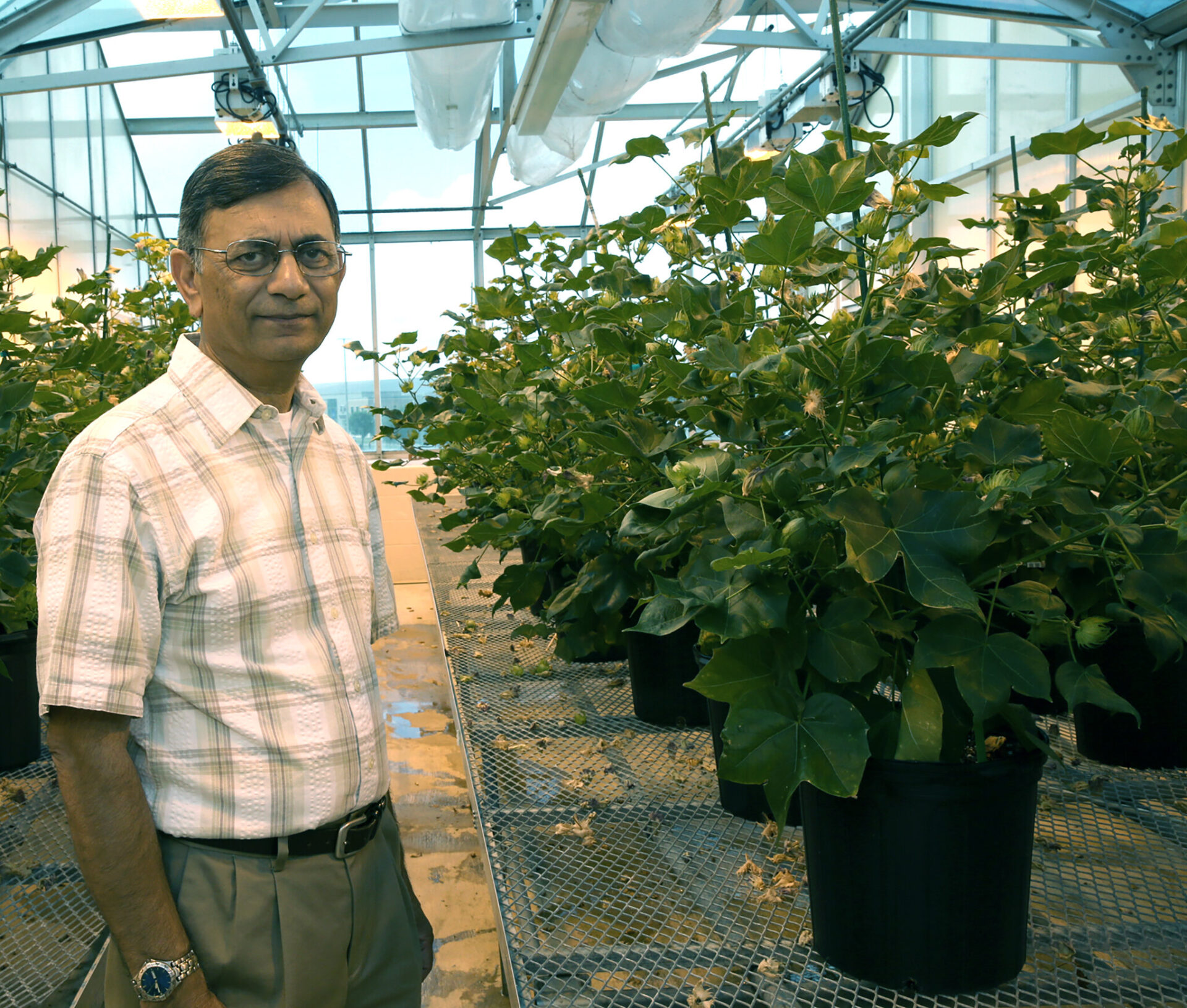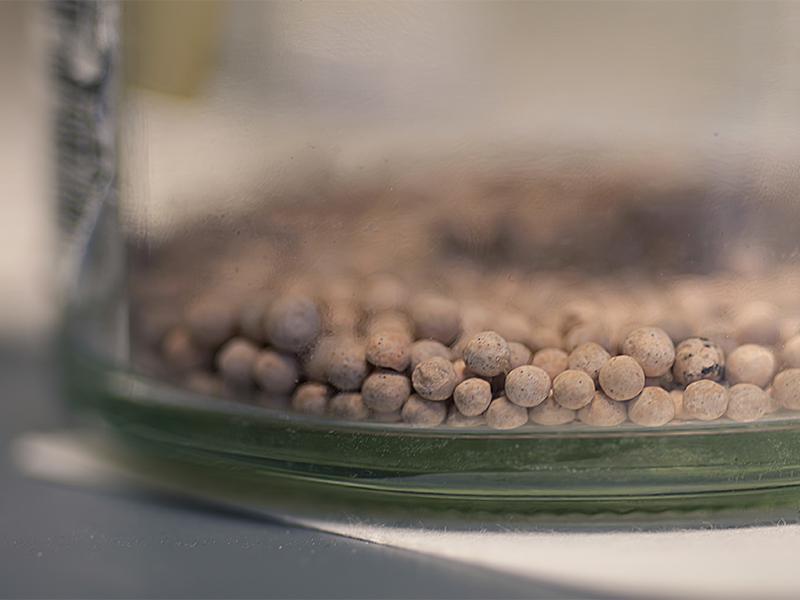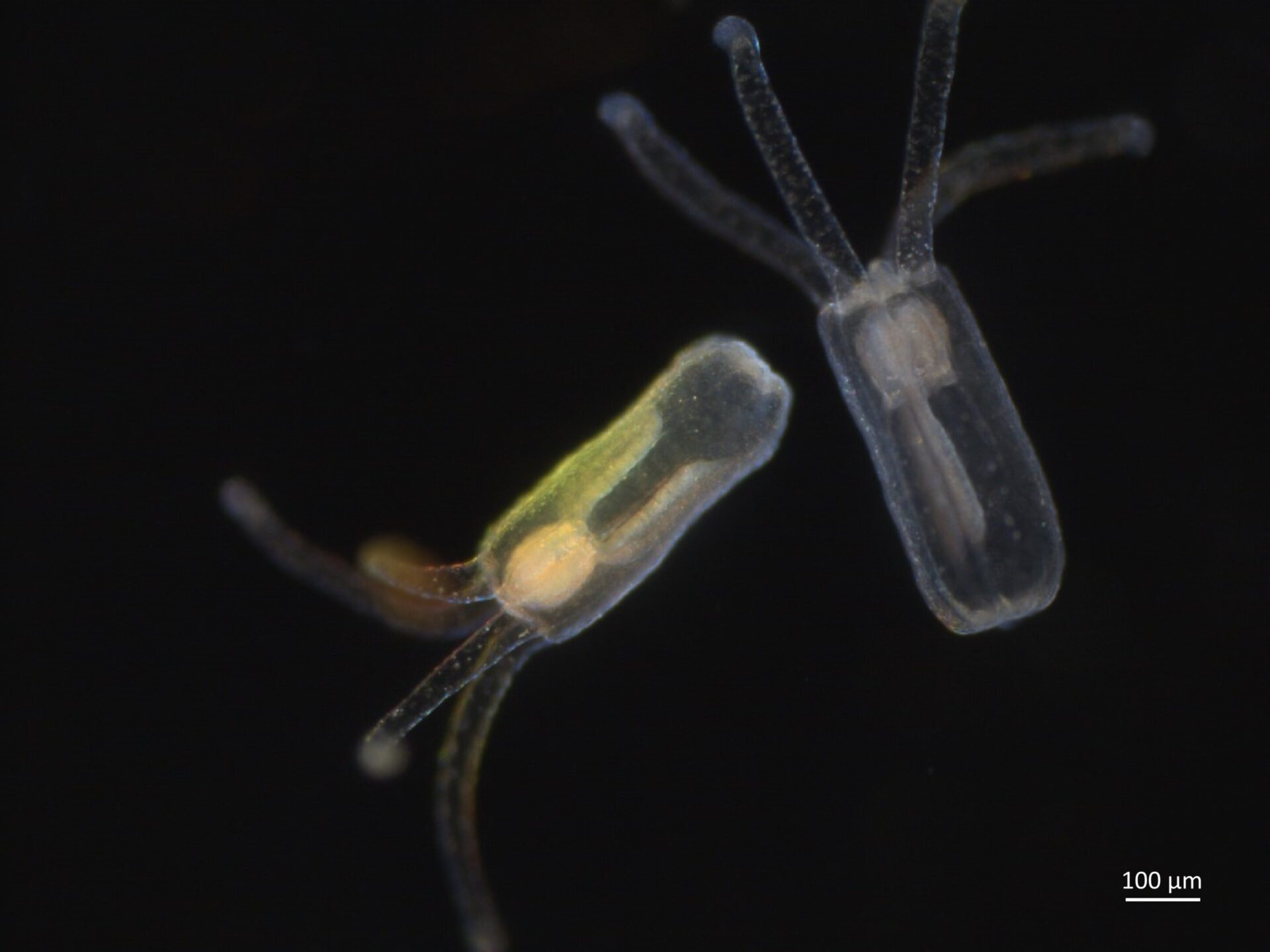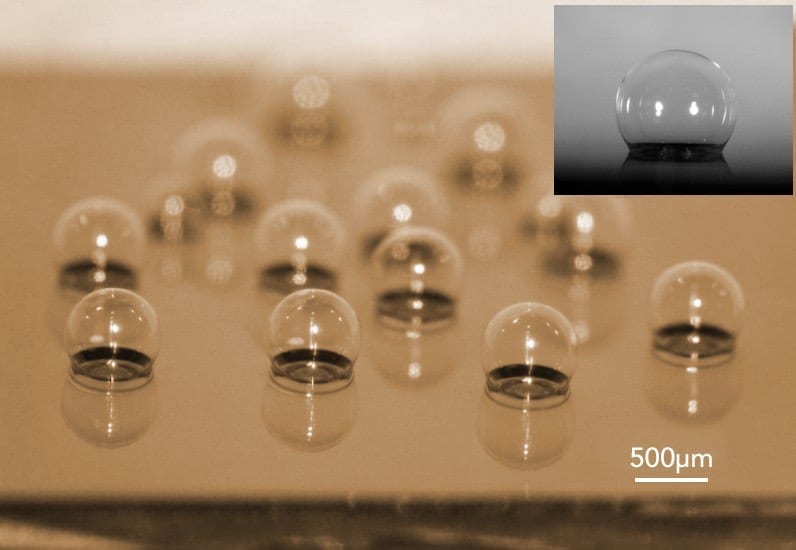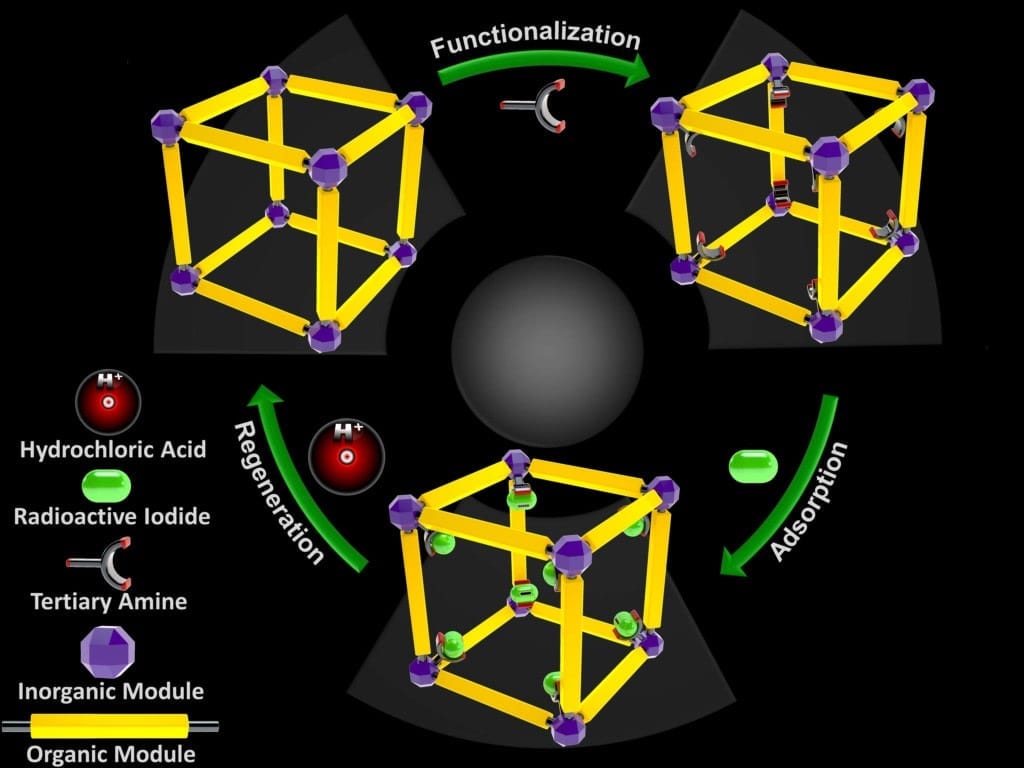
Benjamin Deibert/Rutgers University-New Brunswick
A ‘Molecular Trap’ for Capturing Radioactive Iodides in Nuclear Waste
Seeking a better way to capture radioactive iodides in spent nuclear reactor fuel, Rutgers–New Brunswick scientists have developed an extremely efficient “molecular trap” that can be recycled and reused.
The trap is like a tiny, porous super-sponge. The internal surface area of just 1 gram of this material could stretch out to cover five 94-by-50-foot basketball courts, or 23,500 square feet. And, once caught inside, radioactive iodides will remain trapped for eons.
“This type of material has tremendous potential because of its high porosity,” said Jing Li, distinguished professor in the Department of Chemistry and Chemical Biology at Rutgers University-New Brunswick. “It has far more space than a sponge and it can trap lots of stuff.”
Li is corresponding author of a study on molecular traps for nuclear fuel reprocessing that was published in Nature Communications. The first author is Baiyan Li, a former postdoctoral associate in Li’s group, and other Rutgers co-authors include doctoral students Hao Wang and Benjamin J. Deibert.
Reprocessing means separating spent nuclear reactor fuel into materials that may be recycled for use in new nuclear fuel or discarded as waste, according to the U.S. Nuclear Regulatory Commission. The U.S. has no commercial reprocessing facilities at the moment, but commercial facilities are operating in other countries.
When spent fuel is reprocessed, radioactive molecular iodine and organic iodide gases that pose cancer and environmental risks must be captured and sequestered. The long-lived gases are hard to capture and can leak into the environment, the Rutgers study says.
Solid adsorbents like silver-infused silica, alumina and zeolites can capture iodides, but their low uptake capacity and poor recyclability make them inefficient and costly, according to Li, who works in the School of Arts and Sciences.
It also far outperforms all current industrial materials in adsorbing, or binding to, radioactive organic iodides. For example, its ability to adsorb methyl iodide at 302 degrees Fahrenheit exceeds that of a benchmark industrial product by more than 340 percent.
Another benefit of the Rutgers molecular trap is that captured methyl iodide can be removed from metal-organic frameworks, enabling their recycling and reuse. This is not possible with current industrial products, from which adsorbent must be sequestered along with captured radioactive iodides.
The metal-organic framework is also cheaper than existing products because it doesn’t use silver or other precious metals, and is very robust, able to handle harsh reprocessing conditions such as high temperatures, high acidity and high humidity, Li said.
“We’re off to a very good start and we’d like to make improvements,” Li said. “Eventually, we hope it can be commercialized.”
Learn more: Rutgers-led Research Could Revolutionize Nuclear Waste Reprocessing and Save Money
The Latest on: Nuclear waste reprocessing
[google_news title=”” keyword=”nuclear waste reprocessing” num_posts=”10″ blurb_length=”0″ show_thumb=”left”]- $15M elevator repairs at Waste Isolation Pilot Plant nuclear repository starting in Julyon April 26, 2024 at 3:58 am
A $15 million project to rebuild part of an elevator at the Waste Isolation Pilot Plant used to move mined salt out of the underground was planned for July and expected to be completed by October, ...
- Tribunal judge accused of bullying and misogynyon April 25, 2024 at 4:38 pm
Five women have accused a judge of bullying and sexist behaviour during employment tribunal hearings. One woman told BBC News Judge Philip Lancaster had shouted at her at least 16 times, while another ...
- Missouri Senate advances KC weapons facility tax break without aid for nuclear waste victimson April 25, 2024 at 7:36 am
An effort to create a program for St. Louis-area residents affected by radioactive waste nearly derailed a Missouri Senate bill backed by the Kansas City delegation to help expand a facility ...
- Unstable nuclear-waste dams threaten fertile Central Asia heartlandon April 23, 2024 at 2:26 pm
Dams holding vast amounts of uranium mine tailings above the fertile Fergana valley in Central Asia are unstable, threatening a possible Chernobyl-scale nuclear disaster if they collapse that would ...
- Nuclear-waste dams threaten fertile Central Asia heartlandon April 23, 2024 at 2:24 pm
STORY: There is a vast amount of nuclear waste in these scenic hills in Kyrgyzstan.But studies say dams containing the millions of gallons of uranium mine tailings here, near the town of Mailuu-Suu, ...
- Nuclear waste permit being modified. How much will it cost?on April 21, 2024 at 4:02 am
Nuclear waste managers could not financially justify proposed changes in how the materials are handled for disposal at the Waste Isolation Pilot Plant Repository, during a public hearing Wednesday in ...
- WHAT OTHERS ARE SAYING: Here's justice in action, nonethelesson April 17, 2024 at 11:52 am
There is some element of national pride in this unprecedented confirmation of the long-held American principle that no one — not even an ex-president — is above the law.
- Our view: Michele Morrow is only one one of our problemson April 14, 2024 at 7:15 am
The woman who would take charge of K-12 education in this state has addressed her noxious trail of online posts — including calls to, you know, kill people — by ...
- Our Opinion: Michele Morrow is only one one of our problemson April 14, 2024 at 4:45 am
The woman who would take charge of K-12 education in this state has addressed her noxious trail of online posts — including calls to, you know, kill people — by ...
- A nuclear waste storage site proposed in this small, eastern Kern County town draws ire from residentson April 12, 2024 at 7:30 pm
Salazar wants Randsburg to be a pioneer in nuclear waste storage, moving the waste here, away from the San Onofre Plant in San Diego County. He says elements like the quartz monzonite and no-fly zone ...
via Google News and Bing News

